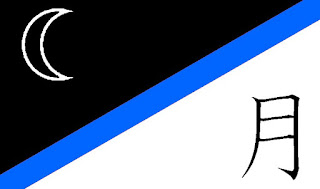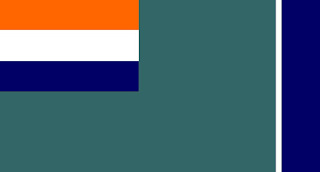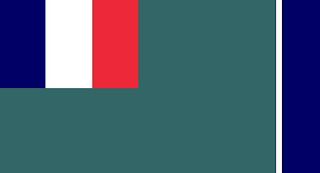The Polish Language flag is based upon a modified Polish flag combined with a language field flag.
The colours of navy blue and sea green reflect that language
is the water element of a persons identity. Like water that fills a
glass, whatever environment your early mind is shaped in you will take on that
identity. Learning a language is like learning to swim, and it takes time
and practice. Eventually an ocean of information overtakes the
mind. Many people can only swim or sail in one type of ocean. Some
persons who are native to the English Ocean in the United States can paddle a
little bit in the Spanish Ocean. But nearly everyone in the United States
can splash around in the kiddie pools of France, Japan, or China since they may
know a few words: like Bonjour! Shay Shay? Oui!
Domoarigato! It takes time and a lot of practice to sail in different Linguistic
Oceans, especially if you are a native to the English Ocean of Speech.
Remember that most people in Canada and the United States may speak English, yet are not English. Thus one should not confuse language with ethnicity as is often the case with Spanish speakers, since there are many people who sail the Spanish Ocean their entire lives, yet do not have one drop of Spanish blood in the heart. Likewise, there are many people with English names in the USA who live their entire life in the English Ocean and have absolutely no English blood flowing their veins.
Likewise many people in India learn to sail the Ocean of English at school, yet have zero English Heritage.
Remember that most people in Canada and the United States may speak English, yet are not English. Thus one should not confuse language with ethnicity as is often the case with Spanish speakers, since there are many people who sail the Spanish Ocean their entire lives, yet do not have one drop of Spanish blood in the heart. Likewise, there are many people with English names in the USA who live their entire life in the English Ocean and have absolutely no English blood flowing their veins.
Likewise many people in India learn to sail the Ocean of English at school, yet have zero English Heritage.











































